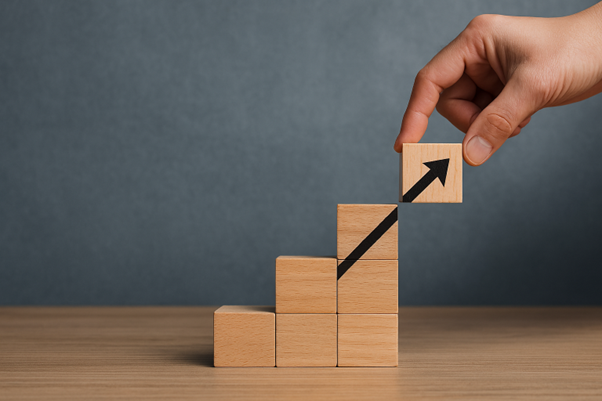How the Right Keynote Speaker Validates Your Organisation’s Mission and Values
The Power of Authentic Representation
Selecting a keynote speaker is often regarded as a strategic decision for any event. Yet, the impact of this choice extends far beyond the duration of the speech itself. The right keynote speaker acts as a living embodiment of an organisation’s mission and values, offering more than inspiration—they provide tangible validation to employees, stakeholders, and the wider community. This validation reinforces credibility, boosts morale, and helps cement an organisation’s identity in an increasingly competitive landscape.
Understanding Organisational Mission and Values
Every successful organisation operates with a clear sense of purpose. The mission statement defines what the company seeks to achieve, whilst the core values set the ethical and operational compass. These elements are not meant to be mere words on a wall or a website—they should permeate every aspect of the business, guiding decisions and behaviour at all levels. However, consistently showcasing these principles can be challenging. This is where a thoughtfully chosen keynote speaker can make a substantial difference.
Amplifying Organisational Identity Through Storytelling
A keynote speaker with a strong alignment to your organisation’s mission and values brings those principles to life through authentic storytelling. Stories have a unique power to resonate emotionally, making abstract concepts tangible and relatable. When a speaker shares personal experiences or case studies that mirror your organisation’s ethos—whether that’s innovation, integrity, sustainability, or social responsibility—it bridges the gap between stated ideals and lived reality.
Consider a company that places a high value on environmental stewardship. Inviting a keynote speaker who has championed sustainability projects or driven eco-friendly innovation offers more than just expertise; it demonstrates that the organisation’s commitment is genuine and actionable. The audience witnesses these values in action, making the mission feel real and achievable.
Fostering Trust and Credibility
In a world where scepticism towards corporate messaging is rife, actions speak louder than words. By selecting a keynote speaker whose track record and public persona are consistent with your organisation’s values, you send a clear message: these ideals are not just public relations; they are business imperatives. This fosters trust among employees, partners, and clients, who are more likely to engage with and support an organisation that walks its talk.
For employees, in particular, seeing an external authority validate the company’s mission can be a powerful motivator. It reassures them that their daily efforts are part of a larger, meaningful purpose. For external stakeholders, such as investors or industry peers, it positions your organisation as a leader with integrity and foresight.
Enhancing Employee Engagement and Culture
Employee engagement thrives when individuals feel connected to their organisation’s mission and values. However, internal communications alone can sometimes fall flat or be perceived as self-serving. The right keynote speaker brings a fresh perspective and external validation, helping to reinvigorate commitment and enthusiasm.
A well-chosen speaker can address challenges, celebrate achievements, and share lessons learned, all while reinforcing the cultural pillars that underpin your organisation. This external endorsement often leads to a renewed sense of pride and ownership among staff, boosting morale and fostering a collaborative, values-driven culture.
Inspiring Action and Change
The right keynote speaker does more than reiterate what your organisation already knows; they inspire action. By demonstrating how your mission and values translate into real-world impact, they challenge both leadership and employees to think creatively and act boldly. For organisations undergoing transformation or seeking to drive change, a compelling speaker can be the catalyst that sparks innovation and motivates people to embrace new initiatives.
For example, if your organisation is committed to diversity and inclusion, a speaker who has successfully navigated these issues in their own career can offer practical insights and strategies. Their stories and advice can empower your teams to move beyond mere compliance, embedding these values into everyday practice.
Demonstrating Social Responsibility
Modern organisations are increasingly judged by their contribution to society, not just their financial performance. Customers, partners, and employees want to see a genuine commitment to social responsibility. A keynote speaker who is recognised for their work in community building, philanthropy, or advocacy can help reinforce your organisation’s dedication to making a positive difference.
Such speakers lend credibility to corporate social responsibility programmes and make it clear that your organisation’s values are aligned with broader societal goals. This alignment can attract like-minded partners and enhance your reputation in the marketplace.
Building Lasting Connections with Stakeholders
The right keynote speaker serves as a powerful connector between your organisation and its stakeholders. Their message can spark meaningful conversations, prompt collaboration, and build bridges with audiences who may have felt disconnected or sceptical in the past.
When stakeholders see a respected figure championing the same values as your organisation, it helps to create a sense of community and shared purpose. This collective buy-in is essential for long-term success, as it encourages loyalty and advocacy from a broad range of supporters.
Setting the Tone for Future Growth
Keynote speakers often set the tone for an event, but their influence can last well beyond the closing remarks. The stories, insights, and inspiration they provide can become touchstones for future decision-making and strategic planning. By choosing a speaker who embodies your mission and values, you lay a foundation for sustainable growth rooted in authenticity and purpose.
This alignment can also help attract top talent, as prospective employees are increasingly seeking workplaces where their own values align with those of the organisation. A keynote speaker who genuinely reflects your culture and aspirations can help position your company as an employer of choice.
Maximising the Impact: How to Choose the Right Speaker
While the benefits of a well-aligned keynote speaker are clear, the selection process itself demands careful consideration. Here are some key factors to keep in mind:
- Alignment with Mission and Values: Research candidates thoroughly to ensure their experience, personal brand, and message resonate with your organisation’s vision.
- Authenticity and Credibility: Look for speakers with a proven track record, whose actions and achievements reflect the values you wish to champion.
- Relatability and Communication Style: Choose someone who can connect with your audience, making your mission and values both accessible and inspiring.
- Relevance to Current Challenges: Consider speakers who can address issues or opportunities currently facing your organisation, providing practical advice and motivation.
- Potential for Long-Term Engagement: Where possible, select speakers who can establish an ongoing relationship with your organisation, offering continued support and inspiration.
Measuring Success: Beyond the Applause
The impact of a keynote speaker should not be measured solely by their ability to entertain or engage during an event. The true measure of success lies in the lasting effect on your organisation’s mission and values. After the event, seek feedback from attendees, monitor changes in engagement or culture, and assess whether the speaker’s message has influenced behaviours or decisions.
You may also wish to track key performance indicators related to employee satisfaction, stakeholder engagement, or progress on strategic initiatives tied to your mission and values. Over time, a pattern of positive outcomes can reinforce the value of investing in speakers who truly validate your organisational identity.
Case Studies: Validation in Action
Many organisations have experienced tangible benefits from aligning their keynote speakers with their mission and values. For example, a technology firm committed to innovation invited a thought leader in artificial intelligence whose work had revolutionised ethical AI practices. The speaker’s insights not only inspired the audience but also led to the development of new internal policies that strengthened the company’s ethical framework.
Similarly, a charity focused on mental health brought in a renowned campaigner who had openly discussed their own experiences. This choice validated the charity’s commitment to openness and support, leading to increased engagement from volunteers and donors alike.
Common Pitfalls: What to Avoid
Not all keynote speakers will be the right fit. One of the most common mistakes is selecting a speaker based solely on fame or entertainment value, without considering alignment with organisational values. A misaligned speaker can send mixed messages, undermine credibility, and even alienate parts of the audience.
Avoid speakers whose values or actions have been inconsistent with your organisation’s ethos, as well as those who may not fully understand your industry or the challenges you face. Prioritise authenticity and relevance over celebrity status.
Final Thoughts: Creating Authentic Endorsement
Choosing the right keynote speaker is ultimately about authenticity. When a speaker’s message and actions reflect your organisation’s mission and values, they provide a powerful form of validation that resonates with audiences both inside and outside your company. This validation is not fleeting; it becomes woven into the fabric of your organisation’s identity, inspiring action, building trust, and laying the groundwork for future success.
In the end, the right keynote speaker does more than deliver a memorable speech—they become a champion for your mission and values, helping to ensure that these principles are not just words, but a living reality for everyone connected to your organisation.









